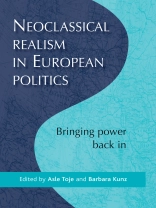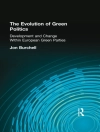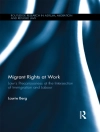Realism is making a comeback in Europe. This book brings together a new generation of realist scholars. It provides a rigorous survey for specialists seeking to understand the dynamics of international relations in a time of change. The volume thus seeks to explore the European dimension to neoclassical realism. The hope with this book is that it will spark a debate that, in time, might lead to the re-emergence of a distinctly European realist school which draws on the roots of the historical, non-American realist tradition, benefiting from insights in the liberal-constructivist paradigm. Through detailed case studies, the book illustrates that power and influence remain fruitful, even indispensable variables through which to understand the formation of foreign policy.
Table des matières
1. Introduction: neoclassical realism in Europe Asle Toje, Barbara Kunz and Michael Agner 2. Realism – a distinctively European academic tradition Torbjørn L. Knutsen 3. The tradition of neoclassical realism Alexander Reichwein 4. Neoclassical realism and power Brian C. Schmidt and Thomas Juneau 5. Ideas of power and the power of ideas Nicholas Kitchen 6. External and domestic determinants of state behaviour Barbara Kunz and Ilai Z. Saltzman 7. Raymond Aron: a neoclassical realists before the label existed? Dario Battistella 8. Explaining European military intervention in Africa: a neoclassical realist perspective Catherine Gegout 9. The rise and fall of CSDP: bringing strategic culture back in Jean-Yves Haine 10. Looking after the ‘European’ interest? Neoclassical realism and the European Union’s engagement with Sub-Saharan Africa Patrick Holden 11. Hegemony by invitation: neoclassical realism, soft power and US-European relations Felix Berenskoetter and Adam Quinn 12. Towards neoclassical realist thinking in Russia? Tatiana Romanova and Elena Pavlova
A propos de l’auteur
Dr. Barbara Kunz is Project Manager at the Bertelsmann Stiftung, Germany












